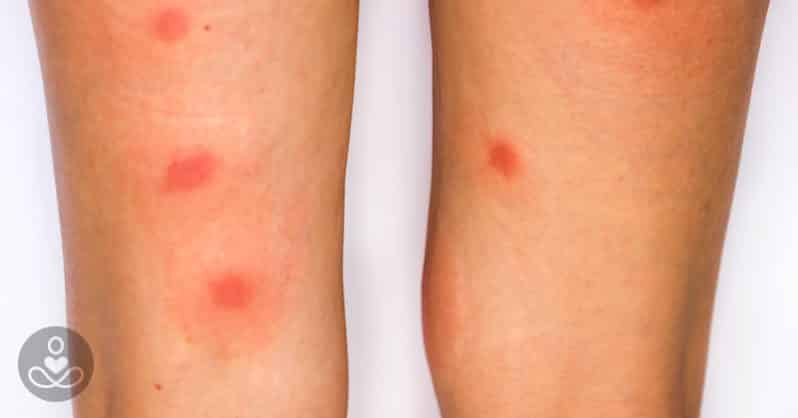
This time of year brings out a seemingly endless onslaught of bugs with the sole purpose of biting anything and everything in sight. While some bites are easy to identify, others can prove more difficult. A little help in identifying what’s what can go a long way in making your life easier this summer.
Summer: the season of picnics, baseball games, and ice cold lemonade on the back porch. But, with all of that outdoor time comes exposure to bugs, and the bites that go along with it. There are millions of bugs in our own backyards, and, sadly, it’s impossible to avoid every single one of them. That being said, we are able to minimize our risk of exposure and treat the bites that do occur naturally, so that we can go on enjoying our summer days with family and friends.
How to Identify the 10 Most Common Bug Bites in North America (and how to avoid them)
#1. Bees
We often see the image of cute, fuzzy bees on children’s backpacks and coloring books, but these little bugs show us their not-so-cute side with their sting.
In order to sting, a bee stabs its barbed stinger into the skin. This stinger contains bee venom that contains proteins that affect skin cells and the immune system, causing pain and swelling to the sting area. Bees are only able to sting the victim once because their stinger becomes stuck inside of the skin[1].
You’re more likely to become stung if you are in close proximity to a beehive. Bees enjoy spending time near food, sweet drinks, and garbage cans, so be aware when you are spending time outdoors, particularly if you’re at a picnic or bar-b-que. Bees are also attracted to bright colors, so avoid wearing floral clothing if you plan to be outside for the day[1].
In most cases, bee stings are more of a nuisance than a serious medical concern, but some people may have a serious allergic reaction and require medical attention. If you begin experiencing signs of anaphylactic shock, seek medical attention immediately, as you may be experiencing an allergic reaction to bee venom.
All this being said, the bee population is shrinking at a dangerous pace! Keep a respectful distance, but please don’t kill bees or destroy beehives. Many beekepers are happy to take a beehive off your hands safely.
#2. Wasps
Wasps may look similar to bees, but they are considered to be slightly more menacing. A wasp is equipped with a stinger that is meant as a tool of self-defense. Just like a bee, a wasps stinger contains venom that, when injected into a human’s skin, will cause pain and swelling. The difference between a wasp and a bee is that a wasp is able to sting the victim multiple times because it’s stinger does not become lodged in the victim’s skin[2].
The majority of people without a wasp allergy will experience a sharp pain or burning at the site of the sting. Redness, swelling, and itching may also occur. For those with an allergy to a wasp sting, symptoms of anaphylaxis may occur, such as swelling of the face, throat, or lips, nausea, and a drop in blood pressure[2].
Like bees, wasps live in a hive, so if there is a hive nearby you can be sure that there will be wasps. Queen wasps typically build small nests in the spring to lay their eggs, and by mid-summer, the nests can reach a considerable size (some even as big as a basketball)[3]. Wasps like to hang out in well-populated areas and are commonly seen in and around garbage cans and picnic sites.
#3. Mosquitos
Anyone who has ever been camping in the summer will be able to tell you what a nuisance mosquitos are. Mosquitos are a member of the fly family. The lifespan of mosquitoes is short (1 week for males and 1 month or more for females) but in that time they can manage to wreak havoc for humans[4].
Mosquitos like to live in the tall grass close to areas that humans inhabit. Standing water is their favorite breeding ground, so beware of bird baths, clogged rain gutters, pools, ponds, or any body of water that isn’t moving[4].
Mosquitos live off of nectar and water, but female mosquitos also need blood in order to reproduce, which is why they will bite animals[4]. The bite will typically leave you with a red, itchy welt for a couple of days.
The real problem with mosquitos is in their ability to spread diseases between animals and humans, as well as between multiple humans.







